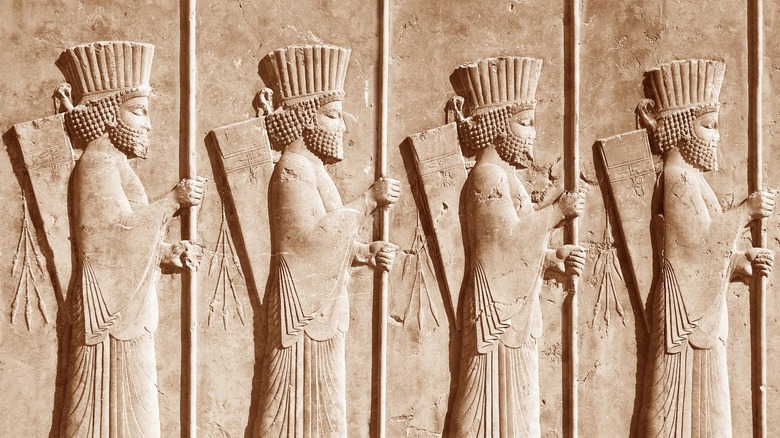How Ancient Persians Used Trees To Execute Criminals
One of the largest and most powerful empires to have existed in the world was the Persian Empire (via History). The Persian Empire was created in 550 B.C. by a man named Cyrus the Great, who united tribes of nomadic herders into a larger kingdom. Over the centuries, the initial Persian Empire would fall and come to be replaced by other leaders, but the name "The Persian Empire" can refer to the region until the 1900s. Now, the area once known as Persia is called Iran, after it was renamed in 1935 (via CBC News).
However, the most memorable era of Persia may be the First Persian Empire, which existed from around 550 B.C. to 330 B.C. (via History). During this period, Persia expanded into new regions, even conquering the nearby Median Empire (via National Geographic). Massive cities were built during this time, as well as glittering artworks. But in a rapidly growing and changing environment, strict law enforcement tools were needed to ensure citizens didn't commit crimes. That's where Ancient Persia's interesting legal punishments come into play.
Persian thieves were sometimes killed using trees
In one particularly gruesome practice, convicted thieves in Ancient Persia were sometimes torn apart using trees (via History Collection). Though this might sound strange, the practice relied on the existence of strong ropes. Executioners would first pull two trees tightly together, and then tie the thief to the trees, with the right limbs tied to one tree, and the left limbs to the other, according to Listverse. When the trees were released and allowed to snap back to their original positions, the victim was torn in half.
Sound gruesome? It definitely was. However, it's worth mentioning that there isn't necessarily a ton of evidence definitively saying how often, or even if, this method of torture was used. The most "proof" of the practice comes from tales of travelers who visited the area (via History Collection). For this reason, we should take any tales about trees as a murder weapon with a grain of salt.
Other unique Ancient Persian punishments
Using trees to split apart a convicted thief is just one of many reported punishments that were used in ancient Persia. Another punishment, scaphism, may have been even more terrible (via Cultura Colectiva). Victims killed by scaphism were forced between two hollow tree trunks or between two boats and force-fed milk and honey to the point of having diarrhea. The milk and honey would also end up all over the prisoner and attract animals and bugs, which would often eat the trapped victims alive. If the person didn't die from animals eating them, the exposure and dehydration would eventually kill them.
Other punishments include cutting off the ears and noses of political rebels or flaying criminals alive (via History Collection). But lest you think the ancient Persians were alone in these violent punishments, other ancient –- and not-so-ancient –- empires used them too. For instance, ancient Romans sometimes killed murderers by placing them in a sack with animals, including a monkey, a snake, and a dog, and throwing them all in the water to drown (via Wyoming County Report). And in the Middle Ages, people in Europe were sometimes sawed in half as a form of execution (via Gizmodo).


